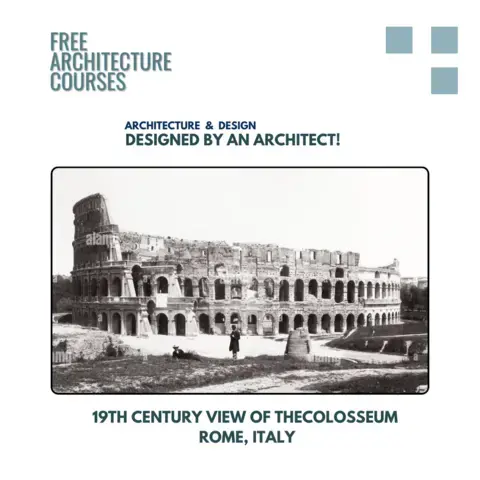Designed by an Architect!
Designed by an Architect - Great Architectural Designs & Architectural Education & Titles
In this section, we explore both classic and modern architecture, giving respect to the brilliant architects of the past. Get ready to learn from the incredible architectural marvels that have shaped human history. As we strive for excellence, we turn to the masters of this field, seeking inspiration and wisdom from their exceptional creations.
Architectural Marvels: A Journey Through Iconic Works Designed by Architects
In the realm of human creativity and innovation, few fields captivate the imagination quite like architecture. Architects are the visionaries, the dreamers, and the craftsmen who give life to our surroundings. Their creations shape our cities, define our skylines, and leave a lasting mark on history. In this exploration, we embark on a journey through some of the most iconic works designed by architects who have left an indelible legacy.
1. The Great Pyramids of Giza, Egypt
Our architectural odyssey begins in ancient Egypt, where the Great Pyramids of Giza stand as a testament to human ingenuity and ambition. These colossal structures, built over 4,500 years ago, were designed by architects who possessed unparalleled knowledge of engineering and geometry. The Pyramid of Khufu, the largest of the three, was once the tallest man-made structure in the world and continues to bewilder scientists with its precision and mathematical significance.


Keywords: great pyramids, Giza, Egypt, ancient architecture, historical wonders
2. The Parthenon, Athens, Greece
Traveling westward, we arrive in Athens, Greece, the cradle of democracy and philosophy. Here, the Parthenon, a temple dedicated to the goddess Athena, stands atop the Acropolis. Designed by architects Ictinus and Callicrates, this Doric masterpiece is a quintessential example of classical Greek architecture. Its harmonious proportions and refined aesthetics have inspired architects and artists for centuries.


Keywords: Parthenon, Athens, Greece, classical architecture, Greek temples
3. The Colosseum, Rome, Italy
Next, we venture to ancient Rome, where the Colosseum, also known as the Flavian Amphitheatre, awaits. Designed by architects Vespasian and Titus, this colossal arena could hold over 50,000 spectators and hosted gladiatorial contests, animal hunts, and theatrical performances. Its ingenious design featured a retractable awning to shield the audience from the elements.


Keywords: Colosseum, Rome, Italy, ancient amphitheater, gladiatorial contests
4. The Taj Mahal, Agra, India
Our architectural expedition now takes us to the Indian subcontinent, where the ethereal Taj Mahal reigns supreme. This UNESCO World Heritage Site was designed by architect Ustad Ahmad Lahori and commissioned by Emperor Shah Jahan as a mausoleum for his beloved wife, Mumtaz Mahal. The Taj Mahal's breathtaking beauty lies in its intricate marble inlay work, symmetrical design, and the play of light on its white marble façade.



Keywords: Taj Mahal, Agra, India, marble mausoleum, Mughal architecture
5. The Eiffel Tower, Paris, France
Stepping into the modern era, we arrive in the heart of Paris, where the Eiffel Tower soars above the cityscape. Designed by engineer Gustave Eiffel, this wrought-iron masterpiece was initially met with skepticism but has since become an enduring symbol of France. Its intricate lattice structure and innovative use of iron showcase the possibilities of 19th-century engineering.
Keywords: Eiffel Tower, Paris, France, wrought-iron, iconic landmarks
6. Fallingwater, Pennsylvania, USA
Turning our gaze to the United States, we encounter Fallingwater, a residential masterpiece designed by architect Frank Lloyd Wright. Perched atop a waterfall in Pennsylvania's Laurel Highlands, this organic architectural marvel blurs the boundaries between nature and design. Wright's visionary approach harmonizes the home with its natural surroundings, making it a true architectural gem.
Keywords: Fallingwater, Frank Lloyd Wright, organic architecture, Pennsylvania
7. Sydney Opera House, Sydney, Australia
Our architectural tour takes us to the Southern Hemisphere, where the Sydney Opera House graces the shores of Australia. Designed by Danish architect Jørn Utzon, this UNESCO World Heritage Site is an extraordinary example of modernist expressionist architecture. Its distinctive shell-like structures and innovative use of concrete make it an iconic symbol of Sydney and the performing arts.
Keywords: Sydney Opera House, Jørn Utzon, modernist architecture, Australia
8. Burj Khalifa, Dubai, United Arab Emirates
Our final destination transports us to the futuristic cityscape of Dubai, where the Burj Khalifa stands as the world's tallest skyscraper. Designed by architect Adrian Smith of the architectural firm SOM, this engineering marvel reaches a staggering height of 828 meters. Its sleek design, cutting-edge technology, and breathtaking views from its observation decks redefine the possibilities of contemporary architecture.
Keywords: Burj Khalifa, Dubai, skyscraper, contemporary architecture
In conclusion, our journey through these iconic works designed by architects has revealed the astonishing diversity and ingenuity of human creativity. From ancient wonders like the Great Pyramids to modern marvels such as the Burj Khalifa, architects have continuously pushed the boundaries of design and engineering. These architectural masterpieces not only enrich our surroundings but also serve as a testament to the enduring legacy of the architects who dared to dream big and shape the world around us.
As we continue to marvel at these remarkable structures, let us remember that architecture is not just about buildings; it's about the stories they tell, the cultures they represent, and the aspirations they embody. These architectural wonders are living proof that the fusion of art and science can yield results that inspire awe and admiration for generations to come.
Explore these architectural wonders firsthand and immerse yourself in the world of architects who have left an indelible mark on our shared history. The designs and visions of these architectural geniuses continue to shape our world, reminding us that the sky is not the limit—our imagination is.
Questions and Answers FAQs
Welcome to our comprehensive FAQs section dedicated to unraveling the intricacies of architecture and the roles of architects. This platform is designed to provide in-depth insights into the architectural world, addressing common queries with clarity and simplicity. Whether you're a budding architect, a curious student, or just fascinated by the world of design, these answers aim to enhance your understanding and appreciation of this creative field.
Architect's Role and Definitions
Detailed FAQ section: Here we get deep into the roles and definitions associated with architects. This segment aims to clarify what architects do, the breadth of their work, and how they are distinguished from other types of designers. Whether you are considering a career in architecture or simply curious about what architects do, this information will provide clear and concise insights.
What is an architect's design called?
An architect's design is often referred to as an "architectural plan" or "blueprint." These plans are detailed drawings that outline the specific details of a building or structure, including dimensions, layouts, and sometimes even materials and finishes. They serve as a roadmap for constructing a building and ensure that the architect's vision is accurately realized.
What is made by an architect?
Architects primarily design buildings and structures. Their work encompasses a variety of projects, from residential homes and office buildings to bridges and monuments. Architects focus on aesthetics, functionality, safety, and sustainability to create spaces that are both beautiful and practical.
Do architects create designs?
Yes, creating designs is a fundamental part of an architect's job. Architects use their training and creativity to develop conceptual ideas for structures and then turn these ideas into detailed plans that can be used for construction. Their designs consider the client's needs, the intended use of the building, local building codes, and environmental impact.
Is an architect a designer?
Yes, architects are specialized designers focused on the built environment. While the term "designer" can apply to professionals in various fields like graphic or interior design, architects specifically design buildings and structures, ensuring they are safe, functional, and aesthetically pleasing.
Can architects design objects?
While architects are traditionally known for designing buildings, they can also apply their design skills to objects. This might include furniture, lighting fixtures, or even decorative elements. Their understanding of space, form, and function allows them to create designs that are both practical and visually appealing.
Can architects design other things?
Apart from buildings and objects, architects can engage in the design of urban landscapes, parks, and even city layouts. They have the skills to consider broader contexts and integrate various elements into cohesive designs that enhance community and environmental well-being.
Do architects design houses?
Yes, designing houses is one of the many tasks an architect can undertake. They work closely with clients to create custom homes that meet specific needs and preferences, considering factors like location, budget, and lifestyle.
What is the difference between an architect and a designer?
The main difference lies in their focus and training. Architects are licensed professionals who design buildings and structures, ensuring they are safe, functional, and compliant with regulations. Designers may focus on a range of other fields, such as graphics or interiors, without the same emphasis on structural integrity and building codes.
Why is it called an architect?
The term "architect" originates from the Greek words "arkhi" (chief) and "tekton" (builder), reflecting the architect's role as the principal planner and constructor of structures. The title signifies their responsibility in envisioning and realizing physical spaces.
Can I say I am an architect?
You can call yourself an architect if you have obtained the necessary educational qualifications, gained relevant experience, and earned a license to practice architecture in your jurisdiction. The title is legally protected and implies a level of professional competence and responsibility.
Is architect a job title?
Yes, "architect" is a professional job title that denotes an individual who is qualified and licensed to practice architecture. It reflects a specific role within the construction and design industry, distinguished by a unique set of skills, responsibilities, and legal obligations.
Architectural Design and Drawings
This section addresses key questions related to the specific outputs of architects— their designs and drawings, exploring what constitutes quality in architectural design, understanding the terminology used for architectural drawings, and discussing the complexity of design work in architecture. Here, we delve into these aspects to provide a clearer understanding of the architectural design process and its outcomes.
What does an architect design?
An architect designs a variety of structures, including residential homes, commercial buildings, educational institutions, healthcare facilities, and public spaces. Their work encompasses the overall form and detail of a building, ensuring functionality, safety, aesthetic value, and environmental sustainability. Architects consider the needs of the building users, the context of the site, and the project's budget and regulations to create comprehensive design solutions.
What is a good design by an architect?
A good design by an architect is one that successfully balances aesthetics, functionality, sustainability, and user well-being. It should:
- Meet the client's needs and preferences while also addressing the requirements of the end-users.
- Respect the environmental context, minimizing negative impacts and leveraging natural resources efficiently.
- Incorporate sustainable practices to reduce energy consumption and promote the health of occupants.
- Be aesthetically pleasing, contributing positively to the surrounding environment and cultural context.
- Ensure structural integrity and safety, adhering to all relevant codes and regulations.
A good design also demonstrates innovation and creativity, pushing beyond conventional solutions to address complex architectural challenges.
What are architect drawings called?
Architect drawings are typically referred to as architectural plans or blueprints. These can include a variety of specific types of drawings, such as:
- Floor plans: Overhead views showing the layout of each floor within a building.
- Elevations: Flat views of a building's exterior, often from all four cardinal directions.
- Sections: Cut-through views showing the building as if it were sliced open, revealing the interior structure.
- Details: Close-up views or enlargements of specific aspects of the design, providing more intricate information about construction or materials.
- Renderings: Visual representations that give a more realistic view of the proposed design, often used for presentation purposes.
Is architect design hard?
Architectural design can be challenging due to its multifaceted nature, requiring a balance of creative, technical, analytical, and interpersonal skills. Architects must:
- Understand and integrate a vast array of requirements, including client needs, user comfort, building codes, and environmental considerations.
- Solve complex problems where multiple solutions may be possible, each with its own set of trade-offs and implications.
- Stay updated on technological advancements and industry trends, continuously adapting and learning.
- Communicate effectively with clients, builders, and other stakeholders to ensure the successful realization of their designs.
While it is a demanding field, many architects find the process of designing immensely rewarding, as it allows them to leave a tangible impact on the built environment and the quality of people's lives.
FAQs: Architectural Education and Titles
This section delves into the educational pathways and professional titles in the field of architecture. It clarifies the terminologies and hierarchies within architectural education and practice, providing insights into the various levels and distinctions that define the profession.
What is the short title for architect?
The short title for an architect is typically "Arch." or "Ar." depending on regional or institutional preferences. In professional settings, architects may simply use the suffix "Architect" after their name, often alongside any licensure or accreditation identifiers specific to their region (e.g., RA for Registered Architect in the U.S.).
What are architect levels?
Architect levels typically refer to the different stages or rankings within an architectural career, often associated with experience, responsibility, and leadership within a firm. These can range from entry-level intern positions to senior roles like Principal or Partner. Common levels include:
- Intern or Architectural Designer (entry-level)
- Project Architect (mid-level, overseeing projects)
- Senior Architect (experienced, with significant project and team leadership responsibilities)
- Principal or Partner (top-level, involved in firm leadership and business development)
What is a Level 1 architect?
A Level 1 architect typically refers to an entry-level position within an architectural firm, often designated for recent graduates or individuals who are in the early stages of their architectural career. Here's a more detailed look at what characterizes a Level 1 architect:
Responsibilities and Characteristics of a Level 1 Architect:
- Recent Graduates: Level 1 architects usually have recently completed their professional degree in architecture, such as a Bachelor of Architecture (B.Arch) or a Master of Architecture (M.Arch).
- Licensing Process: They are often in the process of completing their internships or architectural experience programs required for licensure, such as the Architectural Experience Program (AXP) in the United States.
- Learning and Development: At this stage, architects are focusing on gaining practical experience, understanding the day-to-day operations of an architectural firm, and applying their academic knowledge to real-world projects.
- Supervised Work: Level 1 architects typically work under the guidance and supervision of more experienced architects, assisting in various tasks and gradually taking on more responsibility as they progress in their skills and understanding.
- Task Variety: Their work might include assisting in the creation of architectural models, preparing presentation materials, participating in design discussions, conducting research, and helping with the preparation of construction documents and plans.
Growth and Progression:
- As Level 1 architects gain experience and demonstrate their capabilities, they can advance to higher levels within a firm, taking on greater responsibilities and more complex projects.
- Continuous learning and professional development are key aspects of their career progression, often including pursuing licensure, engaging in professional organizations, and staying updated with industry trends and technologies.
Overall, a Level 1 architect is at the beginning of their professional journey, laying the foundation for a successful career in architecture through learning, practical experience, and professional growth.
What is a Level 2 architect?
A Level 2 architect typically refers to a professional who has gained some experience and responsibility beyond the entry-level, though they are still relatively early in their architectural career. This position is often seen as a step above a Level 1 architect and might involve more autonomy and complexity in tasks. Here's a breakdown of what you can typically expect from a Level 2 architect:
Key Aspects of a Level 2 Architect:
- Experience: Level 2 architects usually have a few years of experience in the field, potentially 2-5 years, depending on the firm's structure and the individual's progression.
- Licensure: They might have completed or be close to completing the licensure process, which allows them more autonomy in their work and the ability to take on greater responsibilities.
- Project Involvement: At this level, architects may lead smaller projects or components of larger projects, demonstrating increased competence and reliability in managing tasks.
- Skill Development: They should have developed a solid skill set in design, technical documentation, and possibly client interaction, building on the foundations laid at Level 1.
- Collaboration: While still under the supervision of more senior architects, Level 2 professionals might begin to mentor junior staff or interns, showcasing leadership and teamwork skills.
Responsibilities:
- Design and Documentation: Level 2 architects are more involved in the design process and play a significant role in developing construction documents, detailed drawings, and specifications.
- Client Interaction: They may start to have more direct interaction with clients, understanding their needs, and presenting ideas and progress.
- Regulatory Compliance: Ensuring projects comply with relevant codes and regulations becomes a more significant part of their responsibility.
- Team Collaboration: They work closely with engineers, contractors, and other professionals to ensure the project's success, demonstrating effective communication and coordination skills.
Career Progression:
- Moving from Level 1 to Level 2 signifies growth in experience, skill, and trust within a firm.
- Architects at this level are expected to pursue continuous professional development, stay informed about industry trends, and may start to specialize in certain areas or types of projects.
- Success at Level 2 can pave the way to more senior positions, where architects take on larger projects and greater leadership roles.
In essence, a Level 2 architect is transitioning from learning and support roles to more significant contributions and beginning to establish a distinct place within the architectural profession.
What is a Level 3 architect?
A Level 3 architect is typically considered an experienced professional who has moved beyond the initial stages of learning and adaptation in the architectural field. This position often denotes a mid-level architect who has developed a deeper understanding of the profession and has started to accumulate significant practical experience. Here is what generally characterizes a Level 3 architect:
Key Characteristics of a Level 3 Architect:
- Advanced Experience: Level 3 architects typically have substantial experience, possibly around 5-10 years in the field, allowing them to handle complex projects and situations with greater independence.
- Licensure: They are usually licensed, which enables them to legally take responsibility for architectural work, including the signing off on design documents and leading project execution.
- Project Leadership: At this level, architects might lead entire projects or significant components of large-scale developments, demonstrating strong project management skills and a deep understanding of architectural practice.
- Client Relations: They often interact directly with clients, managing relationships, understanding client needs, and negotiating project details.
- Mentorship: Level 3 architects might also play a role in mentoring junior staff, sharing their knowledge, and helping to guide the professional development of less experienced team members.
Responsibilities:
- Comprehensive Design and Planning: They are responsible for developing and finalizing architectural designs, ensuring both aesthetic appeal and functional utility while adhering to budgetary constraints and client specifications.
- Technical Documentation: Producing detailed construction documents that clearly convey the necessary information for building implementation is a critical responsibility.
- Regulatory Compliance: They must ensure that all designs comply with relevant building codes, standards, and regulations, often navigating complex legal and regulatory environments.
- Project Oversight: Level 3 architects typically oversee project progress from inception to completion, coordinating with various stakeholders, including construction teams, engineers, and consultants, to ensure successful outcomes.
Career Progression:
- A Level 3 architect is well-positioned for further career advancement, potentially moving into senior architectural roles, specialized areas, or management positions within a firm.
- Continuous professional development, through learning new technologies, engaging with emerging architectural theories, or obtaining additional certifications, can enhance their expertise and value to the firm.
- Success in this role often requires not only strong design and technical skills but also effective leadership, communication, and strategic thinking.
In summary, a Level 3 architect plays a pivotal role in the architecture firm, bringing seasoned expertise to project execution and team leadership, while also acting as a bridge between junior team members and senior management. They are integral to maintaining the firm's design quality, operational efficiency, and client satisfaction.
What is an architect 4?
This title could vary in meaning depending on the context or firm. Generally, an "Architect 4" might be seen as a mid to senior-level architect with substantial experience and responsibility, possibly leading complex projects or a small team.
What is a Level 5 architect?
Level 5 might denote an architect with intermediate experience or responsibility, possibly someone who has completed a bachelor's degree in architecture and is working towards or has recently achieved licensure.
What is a Level 6 architect?
A Level 6 architect is likely a professional with considerable experience and possibly a master's degree in architecture. They may be responsible for significant projects and could be on the path to senior leadership within their practice.
What is a level 7 architect?
A level 7 architect typically refers to someone with advanced qualifications, possibly indicating a leadership or highly experienced position within a firm. In some educational contexts, level 7 might also correspond to a master's degree in architecture.
What level is a master of architecture?
A Master of Architecture (M.Arch) is typically considered a level 7 qualification in the educational framework, indicating advanced postgraduate study. It provides comprehensive professional training and is often a requisite for licensure.
What is the highest rank of an architect?
The highest rank of an architect within a firm could be a Principal, Partner, or Chief Architect. These roles involve significant leadership, decision-making, and often a stake in the firm's ownership or business direction.
How long is an M Arch?
The duration of a Master of Architecture (M.Arch) program can vary but typically spans 1.5 to 3.5 years depending on the student's previous education in architecture, the specific program's requirements, and whether the student is studying full-time or part-time.
Is a Master in architecture hard?
A Master in Architecture can be challenging due to its rigorous coursework, design studios, research, and the synthesis of practical and theoretical knowledge. However, it is also rewarding, offering deep insights into architectural practice and theory.
Is architect a Master's degree?
Becoming an architect does not necessarily require a master's degree; one can become licensed with a Bachelor of Architecture (B.Arch.) degree. However, a Master of Architecture (M.Arch) is a common pathway, especially for individuals who hold an undergraduate degree in another field.
Are architecture degrees good?
Architecture degrees are highly regarded as they equip students with a blend of creative design, technical knowledge, and critical thinking skills. Graduates are prepared for a range of careers within architecture and related fields.
Is there a PhD in architecture?
Yes, there is a PhD in architecture, which is a research-focused degree allowing individuals to delve deeply into a specific area of architectural theory, history, practice, or technology.
What degree do most architects have?
Most architects hold either a Bachelor of Architecture (B.Arch.) or a Master of Architecture (M.Arch.) degree. The specific requirement can depend on the country's licensing regulations. In many places, holding a professional degree in architecture is necessary for licensure.
Additional Questions and Answers:
What skills are essential for an architect?
An architect must possess a combination of creative, technical, and communication skills. Creativity is vital for conceptualizing innovative designs, while technical skills are necessary for creating feasible plans and understanding construction processes. Effective communication helps architects convey their ideas to clients, contractors, and other stakeholders.
How do architects collaborate with other professionals?
Architects frequently collaborate with a variety of professionals, including engineers, interior designers, landscape architects, and urban planners. They work together to ensure that a building is not only aesthetically pleasing but also structurally sound, functional, and integrated with its surroundings.
What is the impact of technology on architecture?
Technology has profoundly transformed architecture, introducing new design tools like CAD software and 3D modeling, which allow architects to create more precise and detailed plans. Additionally, technologies such as virtual reality and building information modeling (BIM) enable architects to visualize and refine their designs more effectively.
How do architects contribute to sustainable development?
Architects play a crucial role in sustainable development by designing buildings that minimize environmental impact, use resources efficiently, and create healthy, livable spaces. They incorporate elements like energy-efficient systems, sustainable materials, and green spaces to promote sustainability.
What are the trends shaping the future of architecture?
Future trends in architecture include increased focus on sustainability, resilience to climate change, and integration of technology. There is also a growing emphasis on designing for community and well-being, creating spaces that foster social interaction, accessibility, and inclusivity.
Explore Further
Study more the depths of architecture and expand your knowledge with these carefully selected subjects. Whether you're an aspiring architect, a seasoned professional looking to broaden your perspective, or simply an enthusiast captivated by the world of design and construction, the following topics offer valuable insights and deeper understanding. Learn more about the interconnected fields and nuanced aspects of architecture to enhance your appreciation and mastery of the subject.
Learn More About Architectural Theory
Foundations of Architectural Theory
- Explore the philosophical underpinnings and theoretical frameworks that have shaped architectural thought and practice over centuries.
Contemporary Architectural Discourse
- Delve into the latest debates, trends, and innovations in architectural theory, understanding how they influence today's design and construction practices.
Learn More About Architectural History
Global Architectural Traditions
- Trace the evolution of architectural styles across different cultures and eras, appreciating the diversity and richness of the field.
Iconic Architects and Their Works
- Study the lives and legacies of renowned architects, analyzing how their unique visions and creations contributed to the discipline.
Learn More About Architectural Practice
Advanced Architectural Design
- Investigate the processes and methodologies that drive innovative architectural design, from concept to completion.
Sustainable Architecture and Design
- Understand the principles of sustainability in architecture, exploring how buildings can be designed to minimize environmental impact while maximizing human well-being.
Learn More About Architectural Technology
Emerging Technologies in Architecture
- Stay abreast of cutting-edge technologies transforming architectural design, visualization, and construction, including BIM, parametric design, and 3D printing.
Materials in Architecture
- Examine the properties, applications, and environmental implications of various materials used in architecture, from traditional substances to novel composites.
Learn More About Related Fields
Urban Design and Planning
- Discover how architectural principles apply on a larger scale in urban design and planning, shaping the environments in which we live.
Landscape Architecture
- Explore the relationship between architecture and landscape, learning how outdoor spaces are designed to complement buildings and serve communities.
Interior Design and Architecture
- Investigate the interplay between architecture and interior design, focusing on how spaces are crafted to be both functional and aesthetically pleasing.
By exploring these subjects, you'll gain a more comprehensive understanding of architecture's multifaceted nature and its pivotal role in shaping human environments and experiences.
